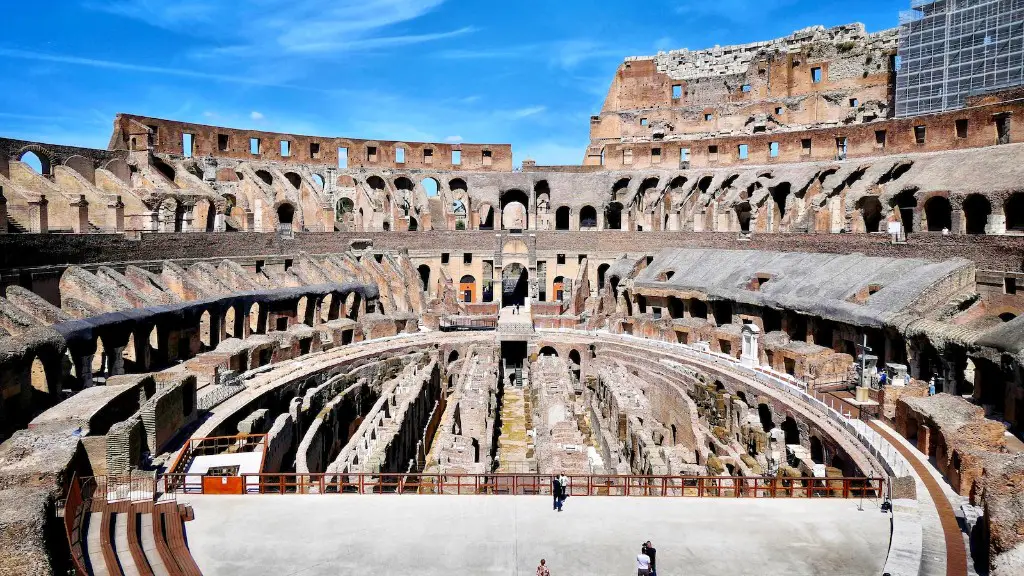Which Churches Recalls the Architectural Elements From Ancient Rome?
Churches are buildings that have been built throughout the centuries all around the world, each with its own distinct style and architecture. One of the most common types of church buildings is the Roman style, which is a direct reference to the architectural elements from churches of ancient Rome. In this article, we will take a look at some of the churches around the world that recall these elements from the Roman Empire.
The Basilica of St. John Lateran
The Basilica of St. John Lateran is one of the oldest churches in Rome, built in the 4th century. It is the ‘mother church’ of all churches in Rome, and the Roman Catholic Church. It is both a place of worship and a major tourist attraction. This basilica is composed of many of the typical Romanesque elements that can be found in ancient churches, such as a high central dome and rear lateral apses. The facade is made of marble imported from Greece, and its interior is divided into three naves, intersected by enormous columns of granite.
Pantheon
The Pantheon is an ancient Greco-Roman temple that has been transformed into a church. Located in Rome, the Pantheon was originally built in 126 AD as a temple for all of the gods, and it is now home to one of the oldest churches in the city. It is an example of unique Roman architecture, featuring a vast interior with a magnificent ceiling and domes, as well as a huge entrance arch. The Pantheon’s architecture also includes five primary entrances that lead from the rotunda to side chambers. Additionally, the floors are composed of fire-hardened terracotta blocks, which were a popular feature of the ancient Roman churches.
Basilica of San Clemente
The Basilica of San Clemente is a major landmark in Rome, and one of the city’s best-preserved ancient churches. It is built upon one of the oldest former churches of Rome – a 4th century basilica. The building was heavily influenced by Roman architecture, as there are a number of Romanesque art works to be found on the interior and exterior walls of the basilica. The exterior design is composed of stone walls, and the interior is decorated with Egyptian-style wall paintings and 12th-century mosaics. The basilica also features a main altar made from marble and bronze, which is decorated with a Renaissance fresco.
Sant’ Agnese in Agone
The Sant’ Agnese in Agone is another church in Rome that draws its main design from the Roman architecture of the time. It is a Baroque style church, which features 10 curved side chapels, each with its own unique architecture. The pillars and walls of the church are decorated with fine works of marble, and the interior ceiling is composed of terracotta tiles, giving the church a truly grand sense of beauty. Additionally, the church is home to artworks by Bernini and Borromini, both prominent baroque architects.
San Pietro in Vincoli
The San Pietro in Vincoli is a major church located in Rome’s Monti district. Originally, the church was intended to serve as a burial site for Pope Julius II, and its construction began in 1506. This church follows the traditional Romanesque style with rounded arches, thick walls and thick pillars. The interior is decorated with grand frescoes and mosaics, as well as fine sculptures from the Roman era. The church is home to Michelangelo’s famous statue of Moses, which is currently located in the left aisle.
Santa Maria Antiqua
Santa Maria Antiqua is a church located in the Roman Forum, which was the political and public center of Ancient Rome. This church was built in the 5th century, and it is currently the oldest standing church in the city. It features a debased Greco-Roman architectural style, which includes arched walls and floors divided into separate chambers. The exterior is decorated with a variety of reliefs from the ancient era, and the interior is decorated with a number of frescoes and mosaics from the 6th century. This church is a living reminder of the grandeur of Roman architecture.
St. Peter’s Basilica
The final example of a Roman-style church is St. Peter’s Basilica, the world’s largest church, located in Vatican City. This massive structure was built between 1506-1590, and it is the beneficiary of a number of renovations that were done in the 18th century. Its design is a direct reference to the architectural styles of the Roman Empire and it consists of a large central dome surrounded by colonnades and four minor domes on each side. The facade is decorated with a wealth of sculptures, a large number of which originate from the Roman period.
Conclusion
Throughout the world, there are a number of churches that reflect the architectural elements of ancient Rome. These churches are not only beautiful landmarks that demonstrate the grandeur of the Roman Empire, but they also serve as reminders of the historical and cultural influences that have shaped the way that we view architecture today.


